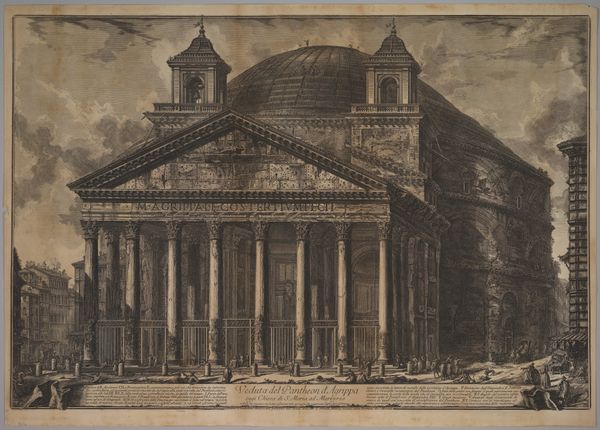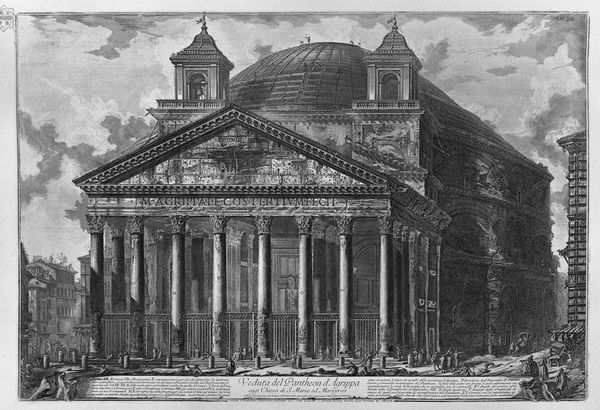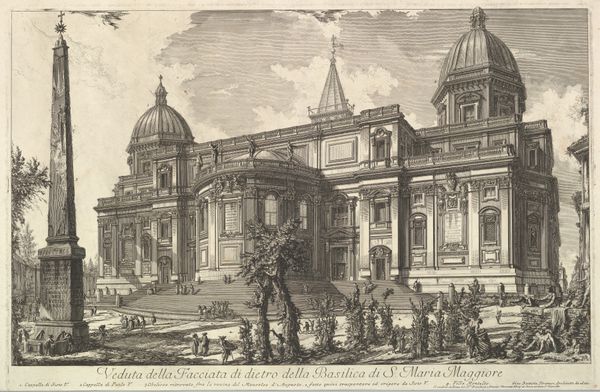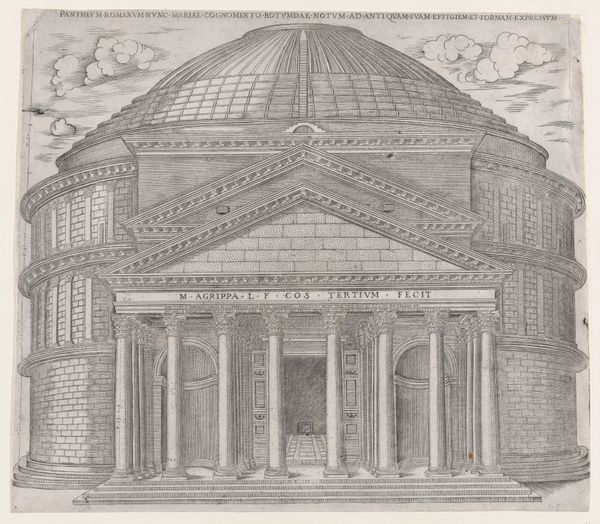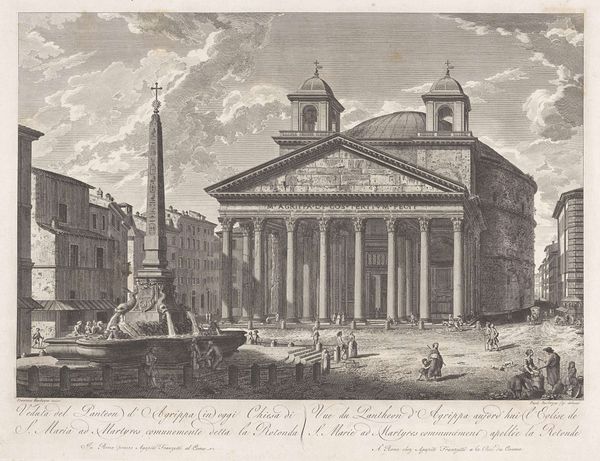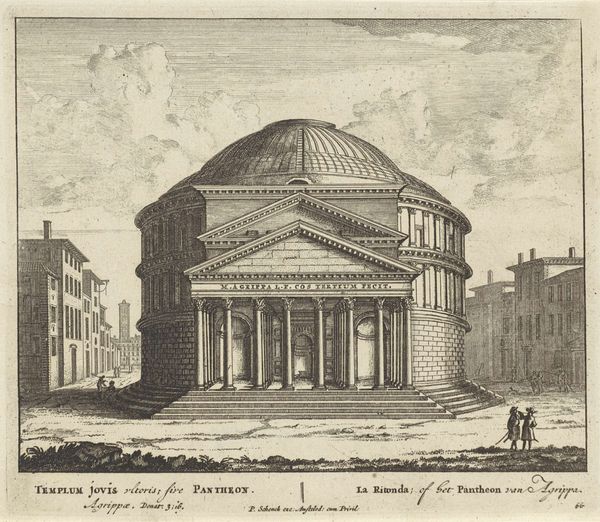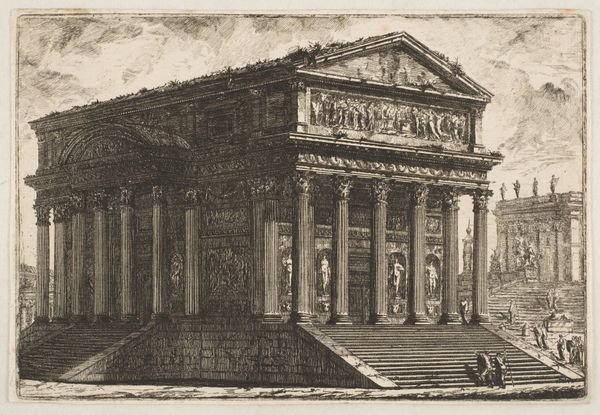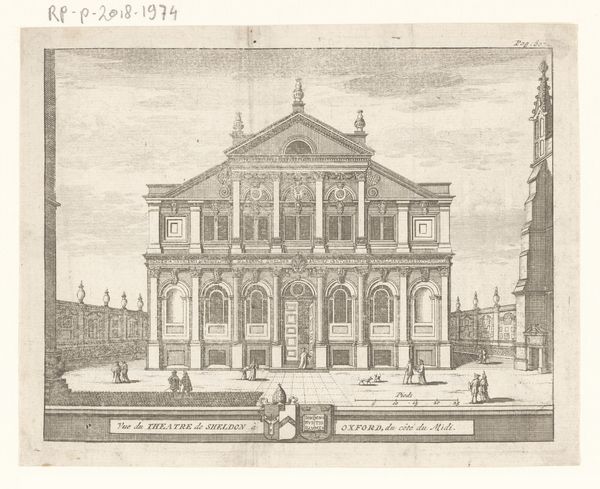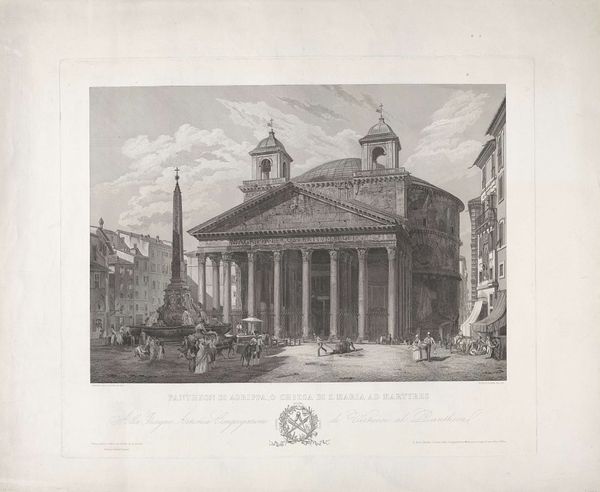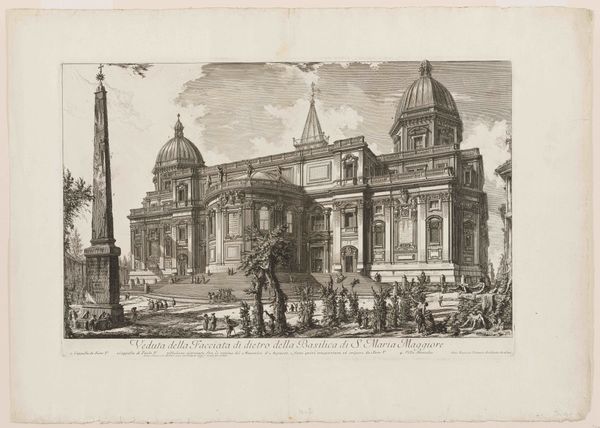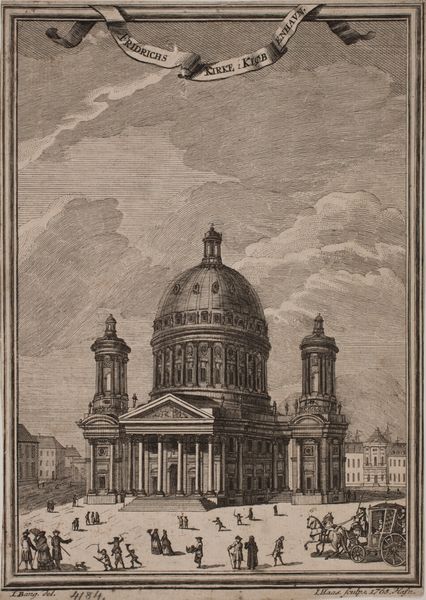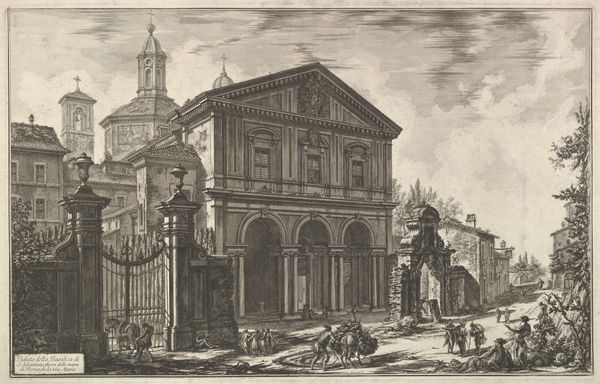
print, etching, engraving, architecture
#
neoclacissism
# print
#
etching
#
etching
#
cityscape
#
italian-renaissance
#
engraving
#
architecture
Dimensions: 18 13/16 x 27 5/8 in. (47.78 x 70.17 cm) (plate)20 1/4 x 28 3/8 in. (51.44 x 72.07 cm) (sheet)
Copyright: Public Domain
Editor: Here we have Giovanni Battista Piranesi's "The Pantheon," created in 1761. It's an etching and engraving of the famous Roman structure. The precision of the lines gives it a real sense of weight and permanence, even though it's just a print. It’s also a very urban scene! What do you make of this image? Curator: What I love is Piranesi’s flair for the dramatic. The way he manipulates perspective… he’s not just showing us the Pantheon, he’s inviting us to *feel* its grandeur. You see how he uses light and shadow, almost like a stage director? It’s not a photograph; it’s a performance. And that's the power of Italian Renaissance. Isn't that so evocative? What do you think he is trying to do here by manipulating depth like this? Editor: I guess he wants to make the building seem even bigger and more impressive. And he is trying to give depth to this street corner of the city! Like he is playing with space and architecture to magnify the image! Curator: Precisely! And that teeming street life at the base... He captures the spirit of the city. For me, this print speaks of time. The way classical ideals mix with daily existence! Do you agree with the sentiment of an artist speaking in its depiction of classical architecture? Editor: Absolutely! You’ve given me a completely different way of looking at it, and to imagine time running! Not just a building but also a bustling part of Rome with history breathing out from every corner of the street. Thanks for sharing! Curator: It’s about more than bricks and mortar and straight lines.
Comments
No comments
Be the first to comment and join the conversation on the ultimate creative platform.
